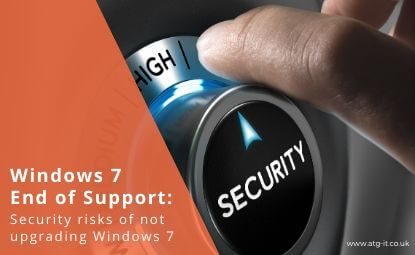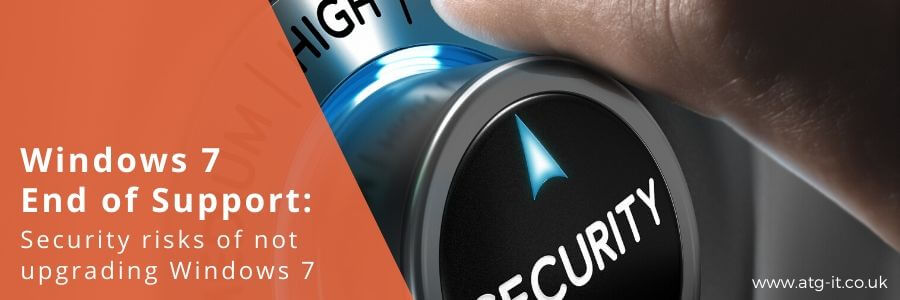What is Windows 7 end of support?
You may have read about Windows 7 EOL (end of life) or heard other business owners talking about it, but not entirely sure what it is. It’s part of Microsoft’s commitment to giving customers the best possible software and to make it efficient and easy to use.
To do this, they focus on continually improving their core offering – Microsoft Office and Windows operating system – and have a policy of getting rid of older versions of the software every 10 years. This means they can be sure that customers are using the best tool available.
Windows 7 was introduced to the market in 2009, so it has now reached its end of life. Windows 8 was brought out in 2012, and Windows 10 in 2015, so the replacements are already well-established and ready to use. Windows 7 EOL is scheduled to take place on 14 January 2020.
What are the security risks?
End of life is a way for Microsoft to phase out older versions of their software which may be more vulnerable to cyber attacks, run slowly and be prone to bugs. After 14 January, they will no longer update the system, so if you continue to use Windows 7, it will become less efficient as time goes by.
Crucially, they won’t release any more security patches for it either, so there’s no protection against hacks or breaches. This means that there is a risk to both your business information and any client data you hold.
If you’ve been diligent about updating your security settings and installing antivirus, firewalls and so on, these will be effective against any known about viruses and malware at the point you made the updates.
However, cybercrime development moves at the same rate as other technological advances, and new, sophisticated malware is being developed all the time, and infecting your computer through weak points you may not be aware of. Your protection will only be as up-to-date as the last upgrade it had before EOL, so it won’t keep you safe from new threats.
Criminals are waiting until the date has passed and then targeting those who are still using the out-of-date version. There’s no way to know if you’ll be attacked, when, or what level of damage a breach will do to your system.
If your systems are out of date and unprotected, you’re in breach of the General Data Protection Regulation (GDPR) which is designed to keep consumer information safe. Your business is also likely to be non-compliant, depending on what legislation covers your industry, as you can’t prove that you’re protecting data.
Why upgrade?
The main reason to upgrade, of course, is that you can be assured that your software is protected from any threats. Microsoft use a pop-up alert system to let all users know when a security or system update is available, and keep reminding you until you install it or it may be managed for you by your IT provider.
As we’ve said, you’ll be getting the most efficient version of Microsoft’s operating system and the newest features in Office. This will be similar to Windows 7, though, so you won’t have to learn how to use something completely new.
Also, if you rely on other tools or specialist software in your business, there’s a risk that they may have had their own updates to make them compatible with Windows 10, so they won’t work as well with Windows 7. In that case, while you’ll still be able to use your current set-up, it probably won’t integrate with anything else.
What if I can’t upgrade?
If you have a piece of machinery or 3rd-party application that is integral to your business that cannot be updated, you do have options. You can remove these machines from your network and the internet, or there are also options available from Microsoft - but these can get expensive.
If you would like to discuss these options in more detail, give our team a call - we are always on hand to help you.



You must be logged in to post a comment.